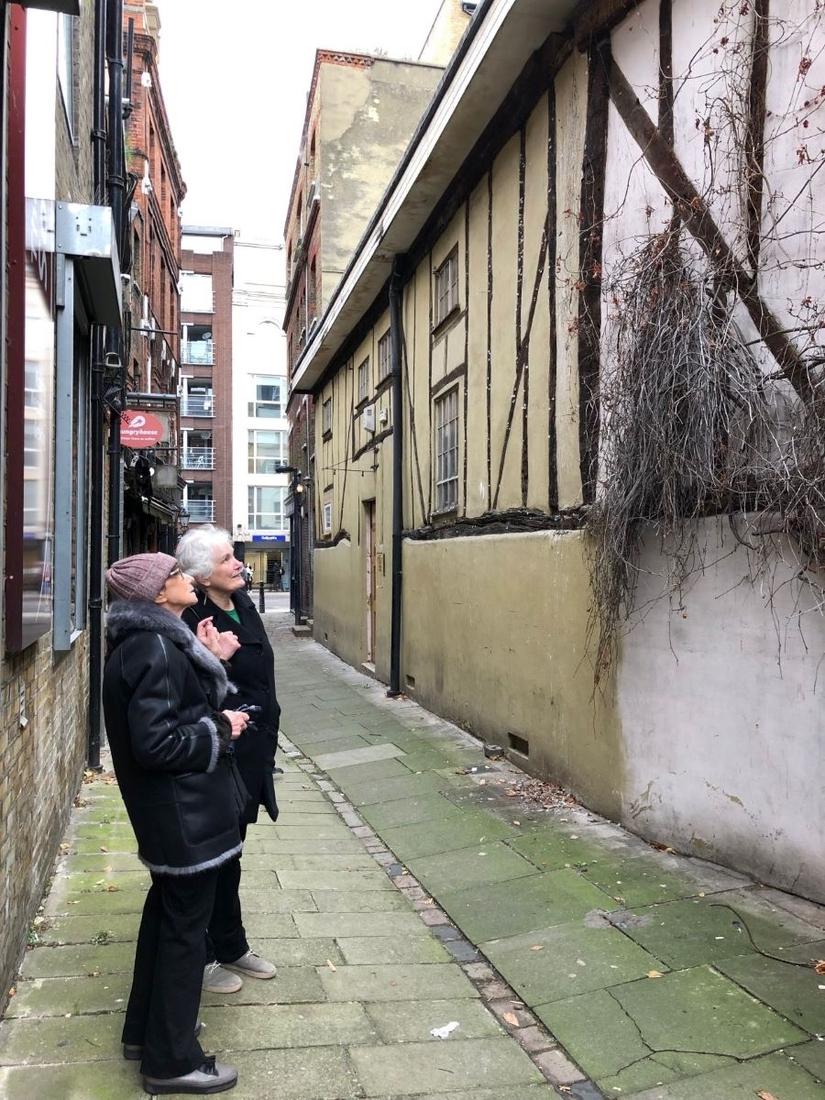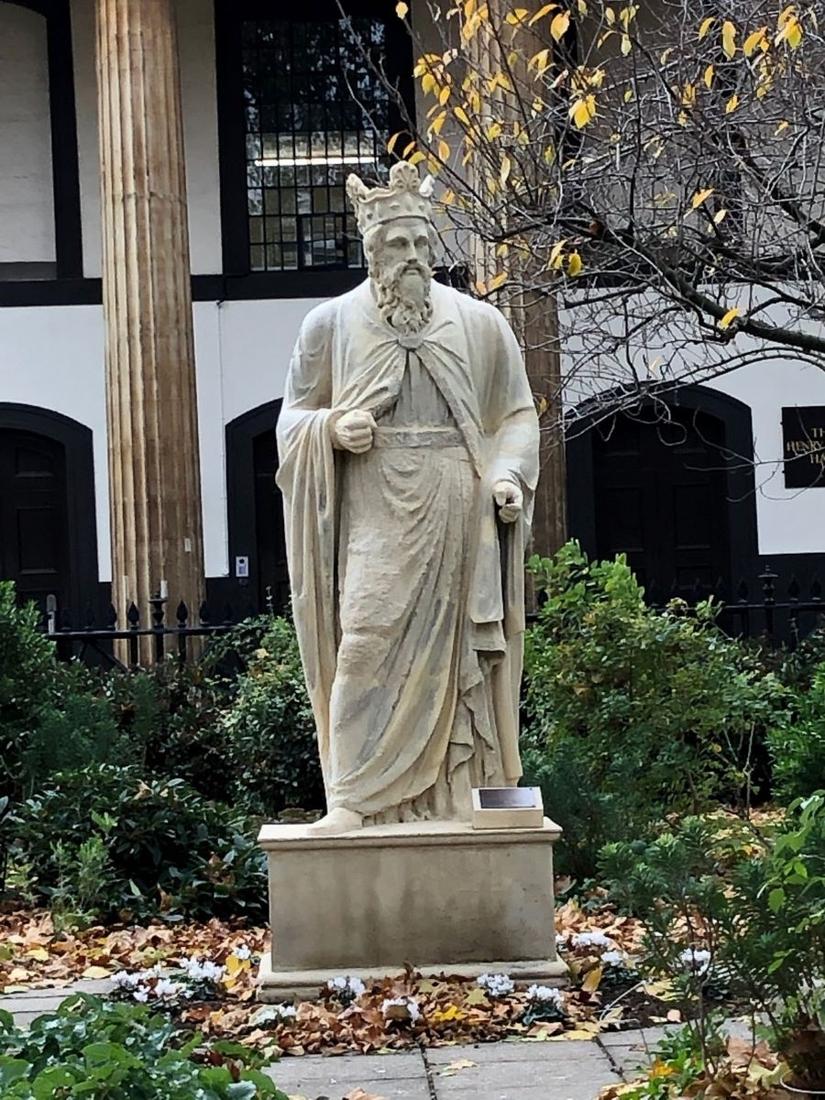The mystery of King Alfred’s leg
In December, the Bermondsey FROGs (Foreshore Recording and Observation Group) got together to explore Roman Southwark. In this FROG Blog, Margaret Sparks shares the sites they visited. It’s an outing you might want to make yourself!
As a FROG group, we are interested in anything connected to the Thames and to London’s history. I was lucky enough to hear a talk by Southwark archaeologist Chris Constable about recent archaeological discoveries in Southwark, some of which were Roman remains, and so we decided to go in search of them.

Guy's Hospital Roman boat
Catriona knows the Borough/London Bridge area well, and so to begin with she took us to see the statue which marks the place where the Guy’s Hospital Roman boat was found. And indeed it is still there, buried deep under the hospital. At the time when the boat was abandoned around AD200, this area would have been a creek leading into the Thames. The boat is a sailing barge, made of oak fastened with iron nails, it would have been 16m long and have been able to carry a cargo of 7 tonnes. It is well worth looking online to see the incredible efforts that went into preserving the boat’s remains in situ when the new Cancer Centre was built in 2016.
The Liberty of Southwark
Our next destination was the excavations at The Liberty of Southwark in Redcross Way, a site where previous MOLA excavations found what was probably a mansio, a Roman inn, for travellers nearing London. Two major Roman roads, Stane Street and Watling Street, ran through this part of Southwark to converge on London Bridge, the only bridge crossing at the time and for centuries afterwards. In fact this area has always had many taverns, and we stopped on the way for a look at The George, well known for being the last galleried inn in London of the kind where plays were performed in the 16th century, before the first theatres.
We were a bit disappointed in Redcross Way to find a very colourful hoarding, but not much information about the excavations, and peering through the locked gate didn’t help us either (although you can find out more on the excavation website). The recent MOLA excavations found the remains of a large and impressive building, dating to around AD 72, with four rooms with painted wall plaster and mosaic floor. It could have been a mansio as previously thought, or a private house. Perhaps most interestingly it had a garden, with paths made of crushed wall plaster, and space for a large pot or maybe a tree.
Cross Bones garden
There are two gardens in the small backstreets near Borough tube, and we saw both on our way to see the mystery leg. Cross Bones garden is on the site of an unconsecrated post-medieval burial ground, where 15,000 bodies were buried, many of them women and small children, all of them poor. Dating from 16th cent, it is popularly believed to have originally been for the burial of prostitutes. Whatever the real truth of that, it has been adopted as a memorial garden to The Outcast Dead, and the railings are decorated with ribbons and other memorials to our unfortunate ancestors.
The other garden, Red Cross Garden, is a very pleasant community garden with a row of cottages, originally designed in 1887 as Octavia Hill’s first social housing scheme. Like many people at the time, she thought decent housing and access to open space would improve life for people in what was a very poor area of Southwark. She went on to become one of the founders of the National Trust.
King Alfred statue
Our final stop was in Trinity Church Square, where the statue of King Alfred has recently been cleaned and restored. The square was designed and the statue put there in 1826. The recent work has shown that Alfred’s right leg is actually Roman! The rest of the statue is Coade stone, and would have been made in sections in a mould, and cemented together.
The Roman sculpture has been carefully fitted in, and the Coade stone drapery designed to match the folds on the leg. Why? Maybe they thought the sculpture was medieval and would make the statue look authentic. Roman stone specialists have said that the sculpture is part of a goddess, probably Minerva, from a large temple complex somewhere. As a final touch, Minerva would have been 3m tall, whereas King Alf is only 2.6m. So he has a very big, old leg!
The PCA blog has more about the conservation and investigation of the statue.
Bermondsey FROG really enjoyed the outing, and we hope you like hearing about it.
